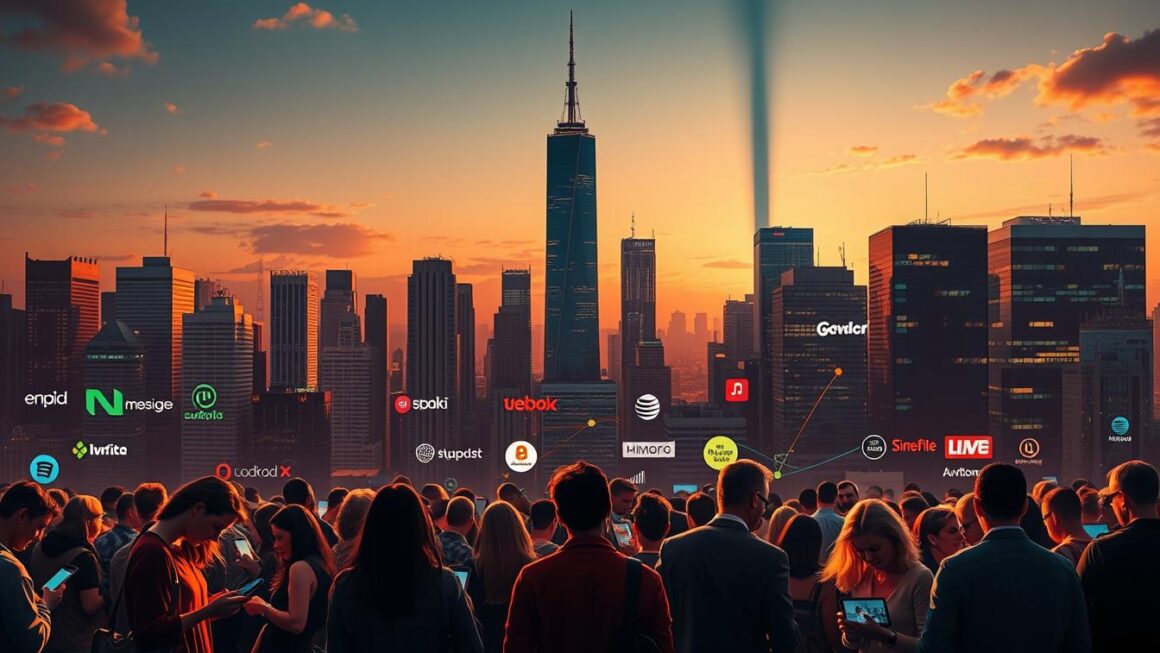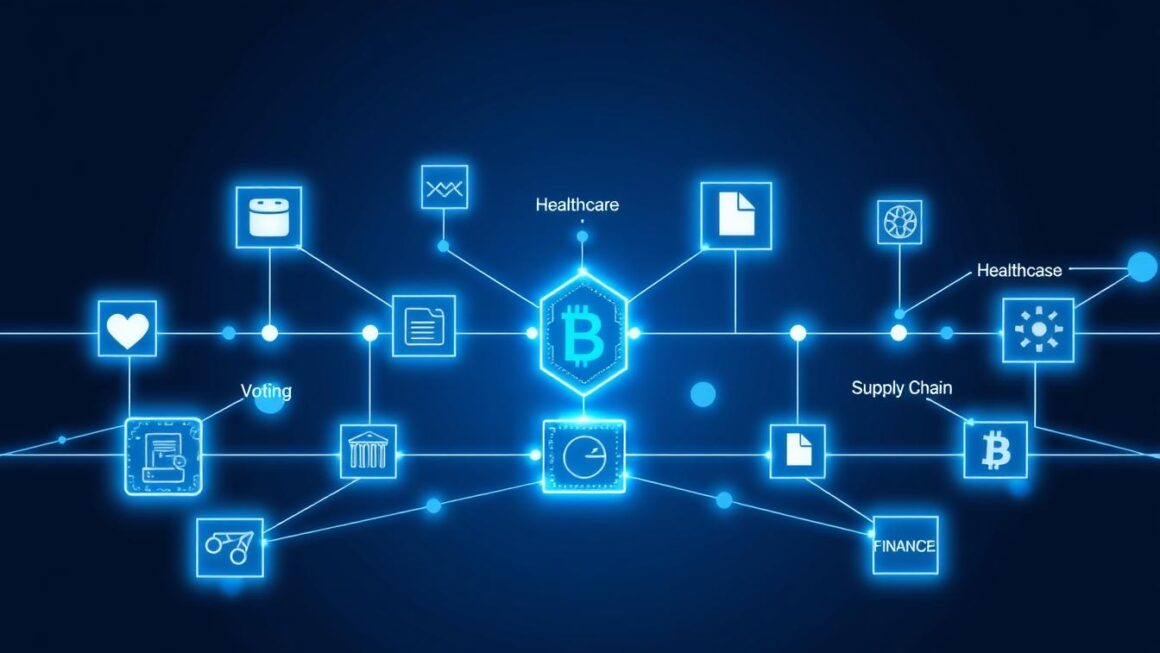In the U.S., over 60% of households spend about $273 each month on subscriptions. Yet, almost a third of these services are unused. This shows a big problem in the subscription model impact on our daily lives. It shows how digital services, like streaming and software, have changed how we spend money. They offer convenience but also hidden costs.
Companies like Adobe and Spotify make a lot of money from subscriptions. But, people often pay for apps they don’t use. The subscription model impact affects everything from what we watch to how businesses grow. It makes households and businesses struggle to find a balance between convenience and rising costs.
Key Takeaways
- Average U.S. households spend $273/month on subscriptions, many unused.
- Auto-renewal traps and hidden fees complicate consumer savings.
- Businesses like Adobe leverage subscriptions for stable revenue streams.
- Gen Z leads in subscription cancellations, highlighting “fatigue” trends.
- Transparent billing practices could reduce consumer frustration and boost trust.
Understanding Subscription Models and Household Spending
Subscription services change how we spend money, making life easier but also more expensive. Many families struggle with the costs because of automatic renewals and hidden fees. It’s important to know how these services affect our budgets.
Auto-Renewal Traps & Hidden Costs
Auto-renewal can lead to surprise bills. Over 60% of people forget to cancel unused services, costing them $120 a year. Extra fees, like taxes or add-ons, make it harder to keep track of expenses.
Subscription Fatigue Among Gen Z
- Gen Z has about 7 subscriptions but cancels 3 each year because of money issues
- 58% feel too busy to handle all their accounts
Even though they spend a lot on services like Spotify and Netflix, 42% are looking for cheaper options.
Convenience vs. Overload
| Convenience | Overload |
|---|---|
| 24/7 access to services | Rising monthly bills |
| Time saved managing purchases | Difficulty tracking active subscriptions |
Families need to think about these points to match their spending with their needs. Clear billing could help, but many services don’t provide it.
Digital Service Trends Shaping the Marketplace
Today, people turn to digital platforms for fun and daily needs, thanks to digital service trends that make life easier. Services like Netflix, Disney+, and Prime Video are changing how we watch movies and TV shows. This change is not just a matter of taste—it’s transforming industries and how we spend money.
Rise of Streaming Services
Streaming services are booming because they offer what people want: instant access and personalized content. Their success comes from:
- Being available anytime, anywhere
- Being cheaper than cable packages
- Creating original shows that fans love
Now, over half of entertainment budgets for 35% of U.S. homes go to streaming, according to 2023 reports.
Impact on Traditional Media Consumption
Traditional TV is losing viewers as more people watch online. More than 40% of those who used to have cable have cut ties. Movie theaters are also seeing fewer visitors as streaming becomes more popular. This change is pushing old media to evolve—think HBO Max and Paramount+ as examples of this shift.
These changes show a market where digital service trends are not just changing—they’re setting new standards for entertainment and service delivery.
Subscription Impact, Consumer Costs, and Corporate Growth
Subscription models are key for corporate revenue growth. They give businesses steady income and change how we spend money. Companies like Netflix and Microsoft use recurring payments to keep finances stable. This makes investors more confident and increases market value, especially in SaaS industries.
“Recurring revenue models create financial stability for enterprises, even as households face rising subscription expenses.” – 2023 Global Consumer Trends Report
68% of Fortune 500 firms see more corporate revenue growth with subscriptions. But, 43% of U.S. households struggle to keep track of their monthly fees. This shows a big challenge: businesses need steady income, but consumers face budget problems from many services.
For companies, subscriptions mean lower costs to get new customers. Services like Adobe Creative Cloud or streaming platforms bring in long-term money. But, consumers might spend too much on things like streaming, meal kits, and fitness apps, cutting into their disposable income.
To succeed, companies need to find a balance. They should offer clear prices and flexible plans to keep customers. This way, they can keep growing while making sure customers can afford it. Finding the right mix of innovation and affordability is key in today’s market.
Recurring Billing Benefits and Enterprise Success Stories

Companies do well when they use recurring billing systems. This approach changes how businesses grow. It brings stability and chances to try new things. Let’s look at how big names use these systems for lasting success.
Case Studies: Adobe and Spotify
- Adobe moved to subscriptions and saw its annual revenue jump by 25% from 2017 to 2022. This way, users get updates without paying upfront.
- Spotify’s premium service keeps 95% of its paying users each year. This shows that keeping users engaged is key to keeping them.
Predictable Revenue Streams
Recurring billing gives businesses a steady income. This lets them plan budgets and invest in new ideas. For example, software companies can fund research and development. Media platforms can grow their content libraries.
As an analyst said, “Subscriptions create a financial foundation for scaling efficiently.” There are challenges, like users canceling. But, strong customer value keeps them coming back.
Customizing Customer Retention Strategies with Personalization
Today, businesses use personalization to keep customers coming back. They study how users behave to create experiences that match what each person likes. This approach helps keep customers loyal and reduces the chance they’ll leave.
customer retention strategies that use data are key to success in a competitive world.
Tailored Experiences: The Power of Personalization
Companies like Netflix and Spotify use what you watch or listen to to suggest new things. This makes their services feel special and relevant to you. A 2023 study found that personalized suggestions can keep users 35% more engaged.
“Personalization isn’t a luxury—it’s a necessity to survive in subscription-based economies.”
| Company | Personalization Method | Retention Lift |
|---|---|---|
| Amazon | Product recommendations | 22% |
| Spotify | Weekly Discovery playlists | 28% |
| Adobe | Tutorial paths based on user skills | 41% |
Data-Driven Engagement
- Track usage patterns to identify disengaged users
- Automate offers for at-risk customers (e.g., free trial extensions)
- Use AI to predict preferences and adjust content delivery
Services like Truebill make it easy to cancel, which can actually keep customers. McKinsey found that using advanced analytics can boost retention by 20%. Mixing personalization with honesty builds trust, making customer retention strategies both good and right.
Tracking Consumer Spending Trends for Optimized Digital Marketing

Data analytics is key in today’s subscription world. It helps companies spot signs of subscription fatigue solutions, like when people log in less or use features less. Netflix and Amazon adjust their recommendations in real-time to keep users interested.
Leveraging Data Analytics in Subscription Models
Advanced tools watch how often people use services. For instance, 68% of users leave because the content isn’t right for them.
“Predictive analytics can cut churn rates by 25% through proactive adjustments,” states McKinsey’s 2023 report.
Understanding Usage Habits
Spending trends show when people start to use less. Subscription fatigue solutions include:
- Offering tiered plans based on usage data
- Personalized email campaigns triggered by inactivity
- Automated discounts for underutilized accounts
Brands like Peloton now use app data to suggest shorter workout sessions for users showing reduced engagement, extending retention. By tracking detailed behaviors, businesses can innovate without overwhelming users.
Scalability and Tiered Pricing: Meeting Diverse Consumer Needs
Gen Z values flexibility and good deals, making companies rethink how they price things. They offer different levels of service, from affordable to high-end. This meets gen z subscription habits that want options without spending too much.
- Basic plans: attract cost-conscious users
- Premium options: appeal to loyal, high-spending customers
“75% of Gen Z subscribers choose services with customizable tiers, avoiding subscriptions that lock them into one-size-fits-all deals,” states a 2023 market analysis.
HelloFresh, a big name in meal kits, adjusts plans weekly. It saw a 40% jump in Gen Z sign-ups over two years. Scalable pricing helps keep customers by matching prices to what they can afford. Younger users often pick lower tiers during school breaks and upgrade during holidays, showing their spending habits.
Brands win when they offer both affordability and quality. This way, they grow without losing price-conscious customers. They also get money from users who are really into their services. Finding the right balance in pricing helps build lasting loyalty in a market where 68% of Gen Z drop subscriptions if they feel they’re overpaying.
Ethical Billing Practices: Navigating Auto-Renewal and Cancellation Challenges
Auto-renewal ethics are a big deal, with 35% of people saying it’s hard to stop subscriptions. Hidden fees and hard-to-use cancellation steps make users feel stuck. It’s important to have clear rules and easy-to-use systems to keep trust.
“Subscribers deserve straightforward paths to cancel services without navigating mazes of websites and phone menus.” – Consumer Reports, 2023
The Struggle to Cancel Subscriptions
- Hidden auto-renewal clauses often require manual opt-out steps
- Many platforms bury cancellation options in app settings or emails
- Over 60% of complaints to the FTC involve deceptive subscription practices
Ensuring Transparent Subscription Terms
Companies like Netflix and Microsoft now make renewal dates easy to see in user accounts. Ethical auto-renewal ethics mean:
- Prominent renewal reminders 30+ days before charges
- One-click cancellation options on main account dashboards
- Plain-language explanations of billing cycles
Tools like Truebill and Trim help users keep track of subscriptions. But, real change needs industry-wide rules. Being open upfront builds lasting customer loyalty more than just keeping them for now.
Conclusion
Subscription models are changing how we spend and do business. They offer convenience but also come with challenges. For users, it’s key to weigh the benefits like tailored content against the downsides like hidden costs and too much content.
Businesses get a steady income but must be open about their billing practices. They need to be transparent to keep customers happy.
Companies like Adobe and Spotify succeed by being innovative and clear about their terms. They make it easy to cancel subscriptions and keep prices clear. This builds trust with their customers.
They also offer different plans and use data to personalize services. This way, they meet different needs without overwhelming users.
As digital services expand, it’s important to focus on ethical billing. Being open and fair in billing helps everyone. It lets users control their spending and businesses build strong relationships with them.
This approach creates a future where subscriptions work well for both sides. It’s a win-win situation for everyone involved.



